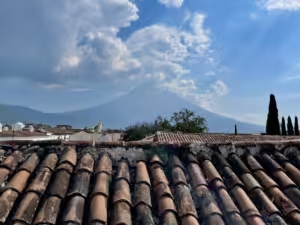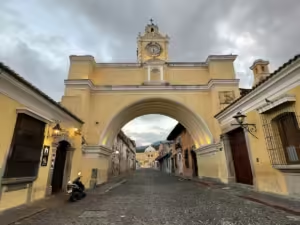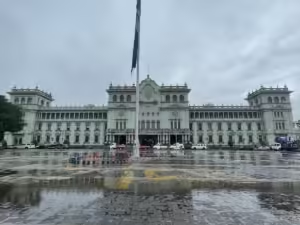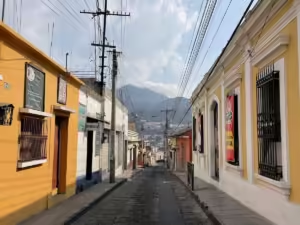The Rio San Juan is a steamy river that weaves its way through lush tropical rain forest along Nicaragua’s border with Costa Rica. Here the intrepid traveler can explore sleepy riverside towns or take a boat through crocodile infested waters. You can also hike through the jungle trails of the Indio-Maíz Biological Reserve. A few unlucky tourists, like myself, might get attacked by a fish.
But the Rio San Juan is more than just a home to exotic, dangerous animals. It’s also a river full of history, from the marauding pirates of the Spanish colonial era to the opulent Vanderbilt steamships of the gold rush. The Rio San Juan is an out of the way destination in Nicaragua that’s well worth the trouble.
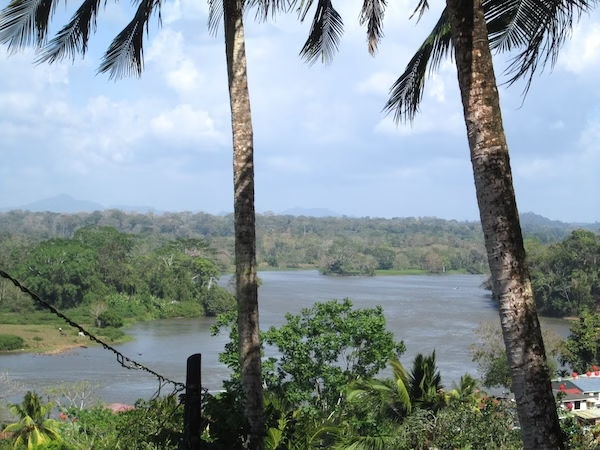
What to Know Before Visiting the Rio San Juan
The Rio San Juan region still seems to be a surprisingly off the beaten path travel destination in Nicaragua. It’s a beautiful area, but it’s also not the easiest to get to. There’s a border crossing at Los Chiles to Costa Rica (and supposedly a fancy new bridge nearby). Most travelers will visit via the Nicaraguan city of San Carlos.
The most reliable way to get to San Carlos is by bus from Managua, which takes about six hours. I arrived there by ferry from Altagracia on Isla Ometepe. In theory, that same ferry comes all the way from Granada. Unfortunately, the ferry is rather sporadic, so check locally before making any firm plans.
Once you’ve reached San Carlos, you’ll catch a public boat down the river to the sleepy river town of El Castillo. El Castillo, despite being a sleepy river town, is the main tourist center on the river. It’s named for an old Spanish fort that still overlooks the town from a nearby hill.
On one of the most fun, but also most stressful, aspects of travel is finding and booking places to stay. These days you have options ranging from dirt cheap hostel dorms to luxurious White Lotus style resorts. Thankfully, the internet is here to make finding accommodation easier.
Hostelworld is the go to app for finding hostels. For everything else, there’s Booking.com. If you book through either of the previous links, I’ll gain a small commission at no extra cost to you.
The Rio San Juan’s History
The Spanish built the fort way back in 1675 to protect the area from pirates hoping to sail up river, into Lake Nicaragua and attack the colonial center of Granada. The fort helped a little, but pirates were still able to make it past and load their ships with Spanish gold.
In the 1800s, the United States was also after gold. During the gold rush, thousands of people wanted to head to California, but the center of the U.S. was still full of angry natives. So, shipping magnate Cornelius Vanderbilt started a steamship service down the Rio San Juan. Prospective prospectors would sail to Nicaragua from the East Coast and then take a steamship across Nicaragua, then sail up the Pacific coast to California. Some people at the time even talked about building a canal to make the journey easier…
Presently, both Nicaragua and Costa Rica are embroiled in border disputes regarding the river at the International Court of Justice in the Hague.
You can read a little more about Nicaragua’s history in my very brief summery here: Understanding Nicaragua: A History Guide for Travelers to This Land of Resistance and Resilience
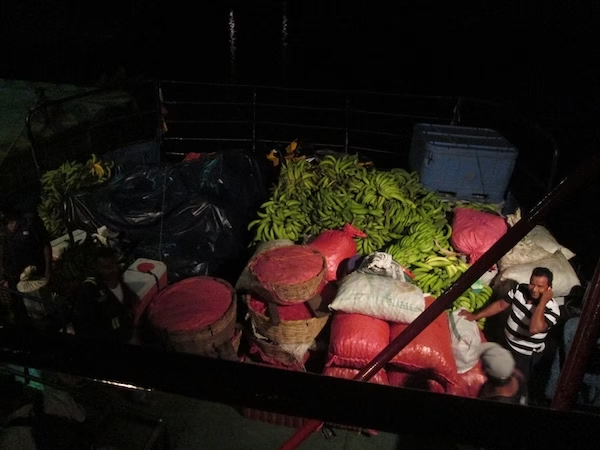
My Experience on the Rio San Juan
I visited this mighty river almost two hundred years after the gold rush, way back in 2013. As such, I can’t promise you the most up to date information. I can promise to share my experience and hopefully inspire you to visit this out of the way region of Nicaragua.
I arrived in San Carlos after the overnight ferry from Isla Ometepe. From there, I hopped on one of the public boats and made my way to El Castillo. A little Nicaraguan boy on the boat was fascinated with my beard. I let him touch my face and it seemed to blow his little mind. Many of the locals have a lot of indigenous ancestry, and I guess beards aren’t too common around these parts.
The boat stopped at various little docks leading up to small settlements of tin roofed shacks and wandering chickens. There was a group of local boys swimming in the river, diving off the end of a dock and generally having a good time. A short way down the river, I watched a large grey crocodile slide into the water after being startled by the boat’s motor. I still sometimes wonder if the swimming children knew there was a crocodile was only a short way down river. I can only assume they knew what they were doing.
If you absolutely must plan your activities in advance, may I suggest Get Your Guide. We’ve used them a couple of times and their tours are generally much cheaper than other sites. If you book through this link, I’ll get a small commission at no extra cost to you. Click here to see tours in Nicaragua.
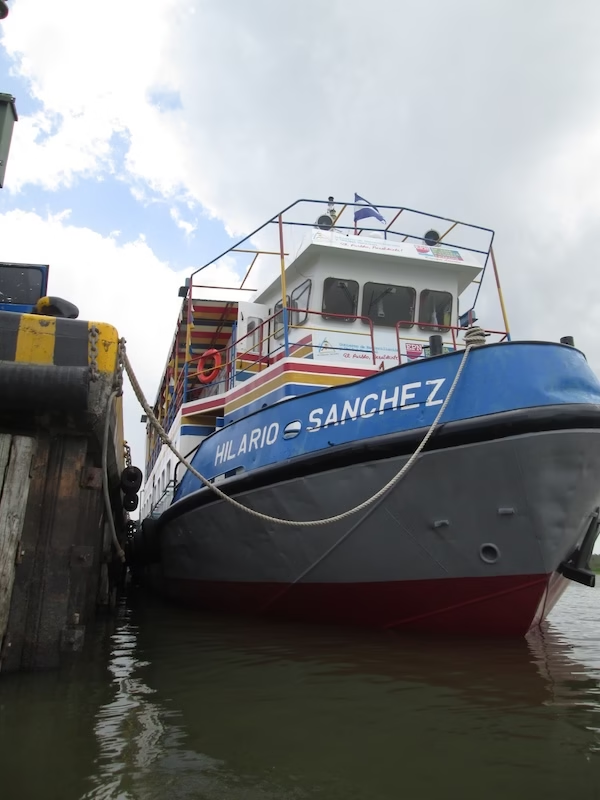
The River Village of El Castillo
We left the swimmers and the crocodile behind and the boat slid up to the dock at the village of El Castillo. The town was a ramshackle collection of ramshackle wooden structures, mostly on stilts. Some of the houses jutted out into the water and it looked like the town was pouring into the river. The old Spanish fort dominated the skyline, as much as a town like El Castillo can have a skyline.
As I said before, El Castillo is the tourist center of the Rio San Juan, but it’s still very much a small town. It took me less than an hour to wander up and down nearly every street. The guy who owns the restaurant is cousins with the couple that own the hostel who are the nephews of the guy who runs the tours. But people were generally friendly, and I felt welcomed into their town/family.
I wandered up to the fort and took a few pictures. The fort doesn’t compare to what you might see in Panama or Cartagena, but it’s enough to satisfy those childhood pirate fantasies. I got lunch, fish of course, from one of the few restaurants. As night fell and the mosquitos began to buzz, I headed back to the hostel to sit and watch the lizards crawl around the ceiling and bark at one another.
And that’s about all there was to do in the town of El Castillo. Most of the excitement of the Rio San Juan lies hidden in the jungles down river.

The Indio Maíz Biological Reserve
In the morning I woke up early for a tour to the Indio-Maíz Biological Reserve, which was part of the reason I’d come down to El Castillo in the first place. I organized the tour through my hostel, and the guide was the son in law of the owners. I boarded the boat along with two Francophone friends I’d met on the ferry. We set off down the river as the morning mist was still rising from the water.
Tours to the biological reserve all have to register at the local army post. I suppose it makes sense they’d have a military presence here, considering the Rio San Juan is right on the border. But these days, the soldiers here also perform the functions of park rangers. Our guide told us the biggest issue these days is poachers crossing over from Costa Rica.
The soldiers seemed like nice enough guys. They’d recently adopted a baby ocelot. I’ll never forget seeing an 18-year-old soldier in full camo fatigues, AK-47 slung across his shoulder, nuzzling that baby ocelot as if it were a beloved house cat.
After registering we continued down river. The jungle grew thicker and the air hotter and somehow more humid. We got out of the boat and walked through the jungle where we learned about some of the local plants and animals. We even saw the dreaded “24 hour” ant. They call it that because if it bites you, you suffer intense pain for 24 hours. Our guide gave us the best advice I’ve ever received about the jungle: “don’t touch anything.”
I kept my hands to myself and we finished our jungle walk and returned to the boat. On the way back, we turned down a tributary and passed by the rusted shell of one of Vanderbilt’s old steam ships. We also stopped for a swim. It would have been a lovely, relaxing dip in the water, but I kept thinking of the crocodile I’d seen the day before.

Night on the Rio San Juan and the Fish Attack
That night, I decided to brave the jungle once again and signed up for a night tour with the same guide. In fact, I will always recommend a night tour when visiting the jungle. The really interesting creatures are almost always nocturnal.
We embarked on a little boat once again, floating down the Rio San Juan in the dark with nothing more than the evening stars and the guide’s flashlight to light the way. We saw plenty of caimans, and a few interesting insects.
I asked about crocodiles, but somehow, we ended up on the subject of sharks. The Rio San Juan is home to the infamous bull shark. The bull shark is the only shark that can survive in fresh water, and they’re found in both Lake Nicaragua and the Rio San Juan. Bull shark attacks also inspired the book and movie Jaws.
Sitting in a small boat in the dark is not the best place to start thinking about sharks and shark attacks. I was staring at the river, wondering what the black water could be hiding, when something jumped out. Whatever it was leapt from the water and slammed directly into my shoulder. It bounced off my shoulder and off the edge of the boat before splashing back in the water.
I immediately shouted “What the fuck!?” in a voice that was probably higher and more terrified sounding than I would have liked it to have been.
The culprit wasn’t a shark or a crocodile or even a caiman. It was a tarpon, or sábalo as they’re called locally. Apparently, these fish regularly leap out of the water on the Rio San Juan, and sometimes they whack into boats or hapless passengers. It can actually be dangerous for little kids and it isn’t unheard of for a tarpon to knock a child into the river. Always wear a life jacket, kids.
Thankfully, I endured the fish attack relatively unscathed, although my shoulder was a bit sore and my t-shirt stunk like fish for a couple of days. A small price to pay for survival.
I left El Castillo and the Rio San Juan with a new appreciation for the mysteries and dangers of the rainforest. Also, I gained an appreciation for the people that live along that jungle river, whose lives still flow with the current of the water. I lost, however, a great deal of my appreciation for jumping fish.
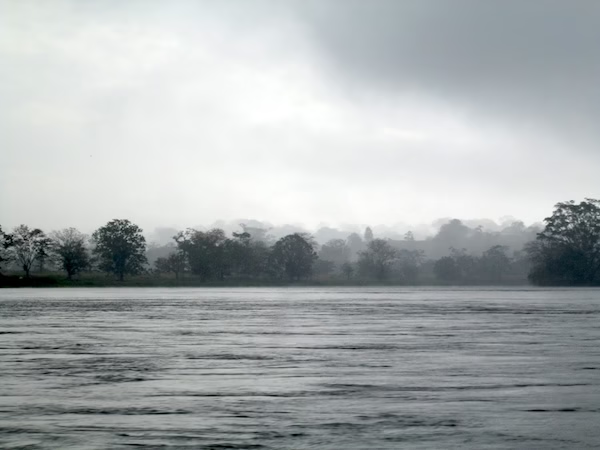
Useful Websites for Traveling Nicaragua
As much as we might long for the days when you could show up to a town with nothing more than a beat-up guidebook and a sense of adventure, today much of traveling involves being glued to our phones making bookings. I’ve compiled some helpful apps and websites below that at least help make those bookings more convenient so you can spend less time staring at your phone and more time exploring at your surroundings. Some of these sites are affiliate links that give me a small commission at no cost to you if you chose to book through them. All of them are sites I’ve used personally and have no problem recommending.
Just be sure to do your due diligence as much as possible. Only hire local guides and try as much as possible to stay in locally owned hotels and hostels so that your hard earned travel dollars actually go to support the local economies of the places you visit.
Booking.com is basically the world’s only hotel booking website. They have hotels, guesthouses and vacation rentals all over Nicaragua.
Hostelworld is the go-to site for booking hostels. If dorm rooms and shared bathrooms are your thing, you’ll find hostels all over Nicaragua.
Get Your Guide offers tours and activities all around the world. Unlike some other sites and apps that do the same thing, you can actually find some reasonably priced deals here.
Centro Coasting is a great website to look up bus routes and times throughout Central America. Schedules change regularly, and the site is sometimes not as up to date as you’d like. However, it’s a good resource to help give you an idea when the buses leave, or at least get you to the right terminal.


